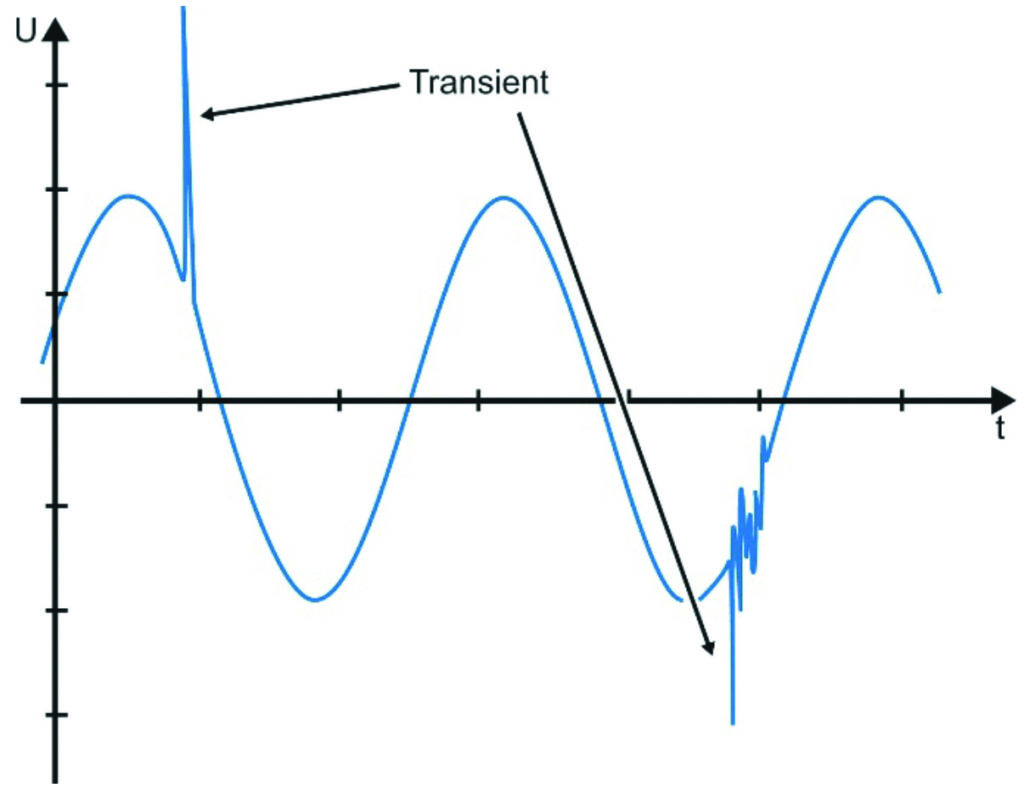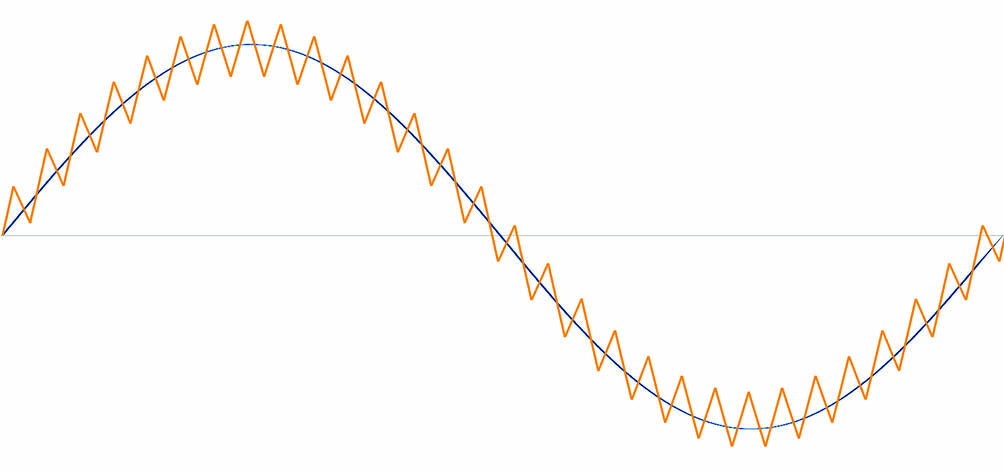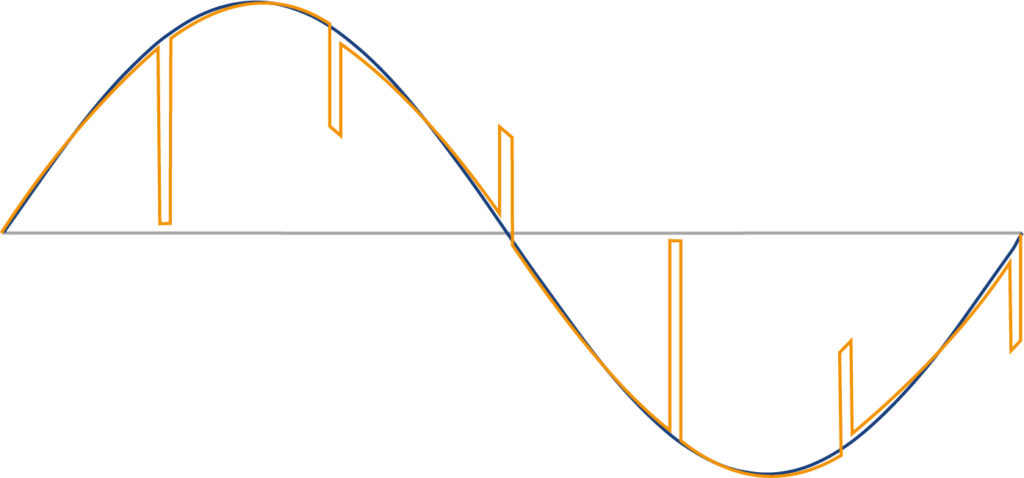Supra-harmonics
The physical sizes of the power electronics components used today, such as circuit boards for inverters and rectifiers, are being further reduced. This makes it possible to switch current and voltage faster and in many different steps. However, this also increases occurring voltage phenomena, which especially in the high-frequency or in the supraharmonic frequency range (> 2 kHz) immensely stress the electrical supply networks.
Transients
Transients are brief voltage or current jumps that occur due to suddenly released energy that was previously stored or induced in other means. In converters, for example, discharges occur when the thyristors are switched, which – depending on their intensity – are reflected in the curves as transients. Another cause of these interference phenomena are machines with strongly inductive characteristics or unplanned electrostatic discharges.
clock frequencies
Electrical circuits, for example inverters in solar parks, switch the DC component to an AC component in varying numbers of steps. Accordingly, the individual steps (clocks) are switched according to their number at a certain speed: the ‘clock frequency’. In this process, disturbing harmonics compose themselves on the voltage curves, which lead to strong distortion of these.
Commutation dips
.



